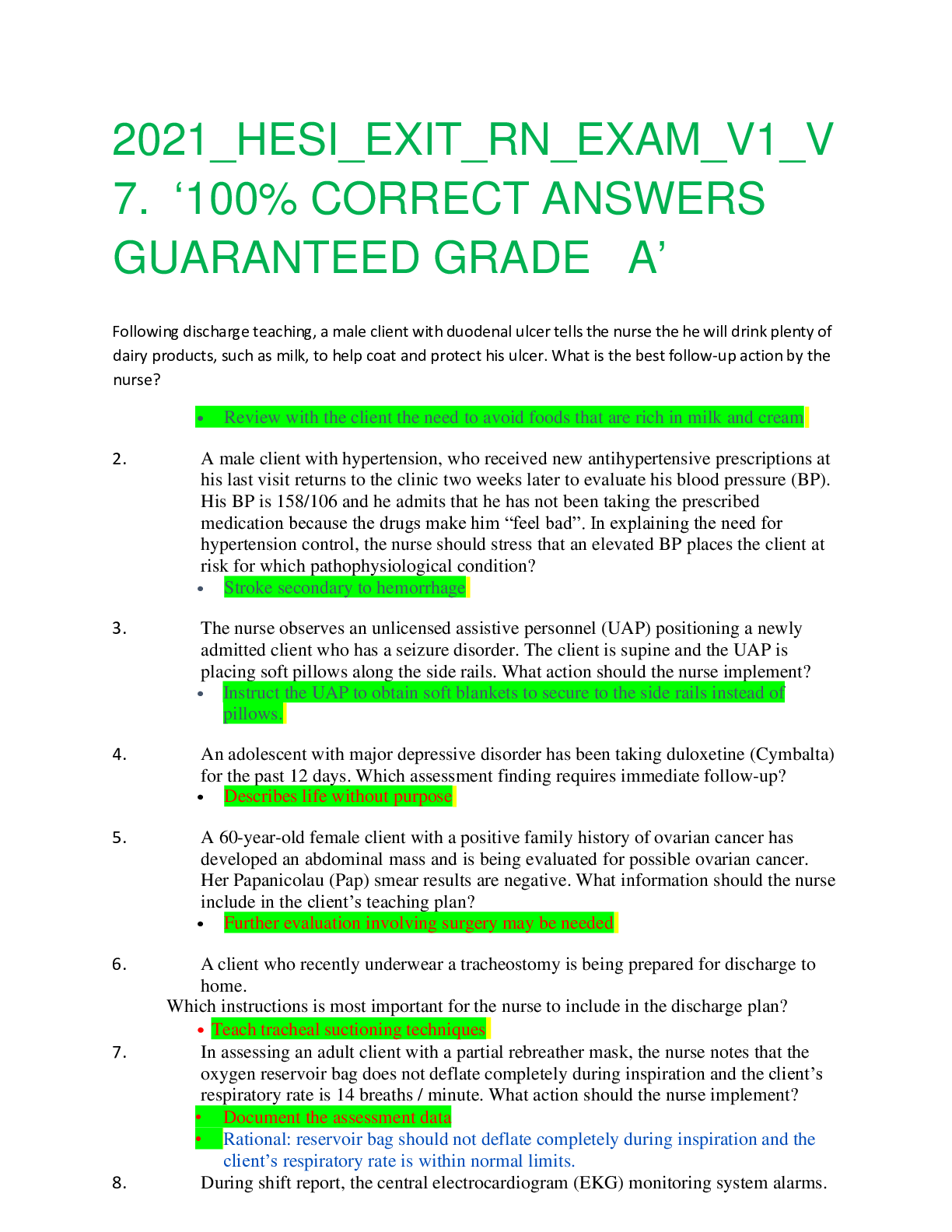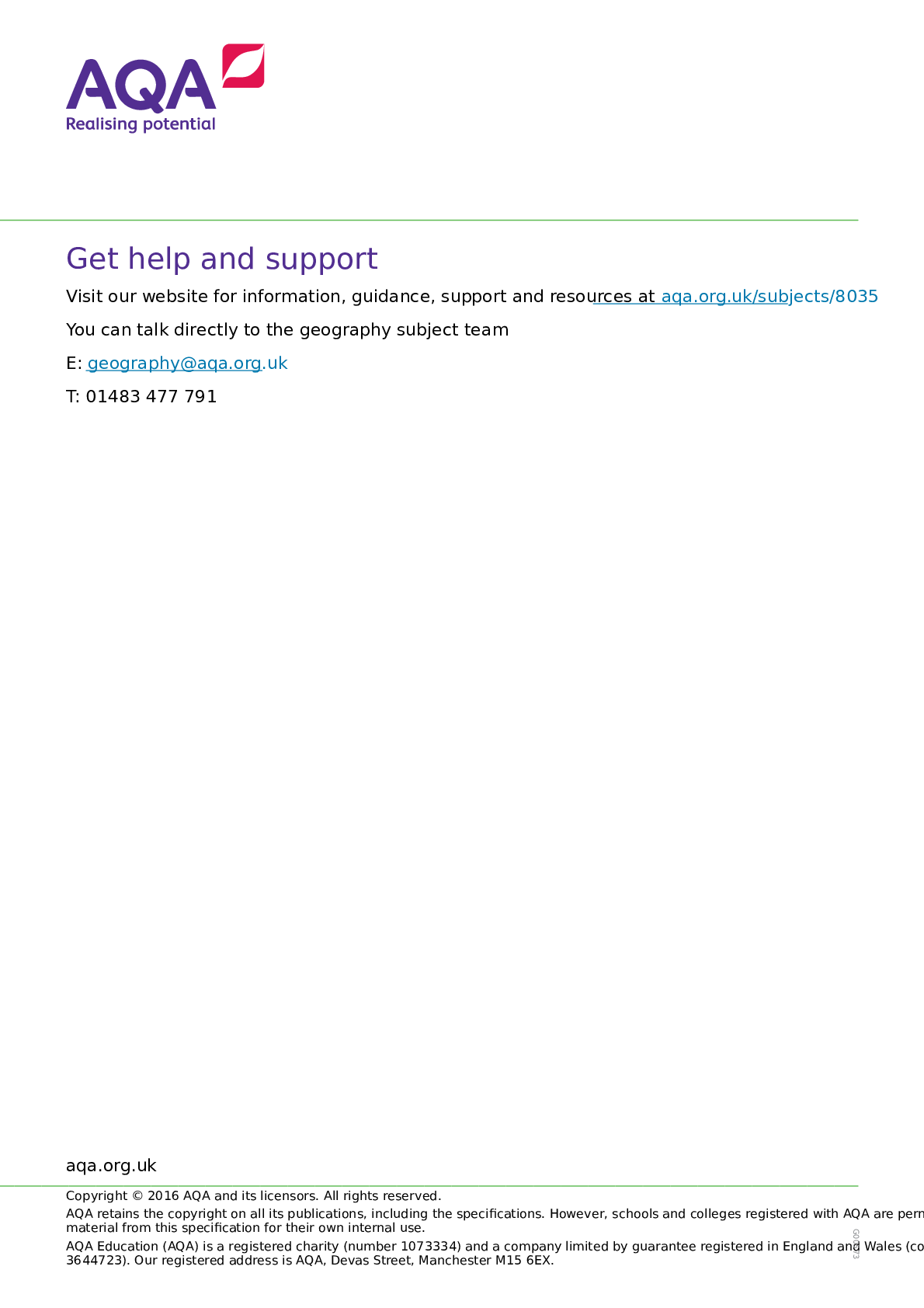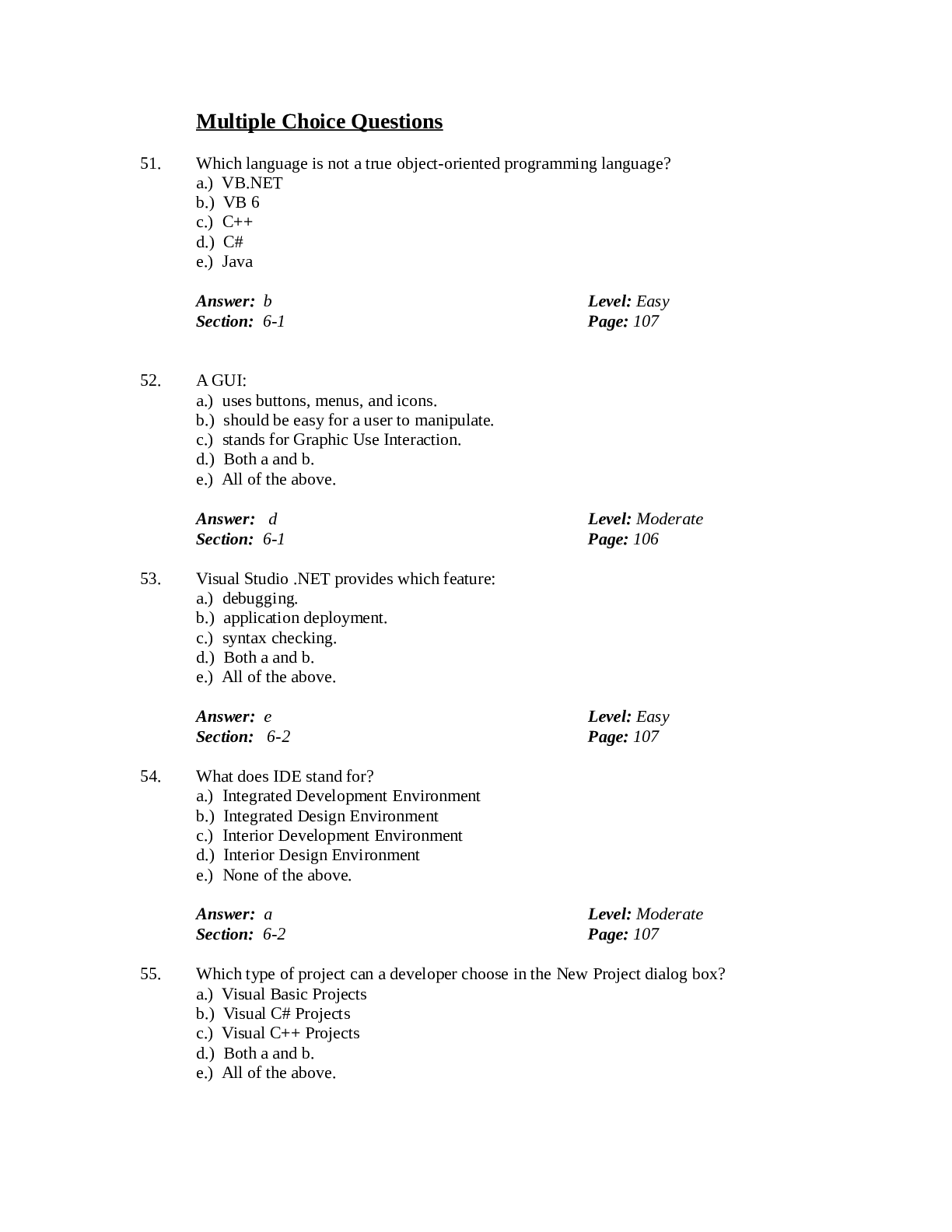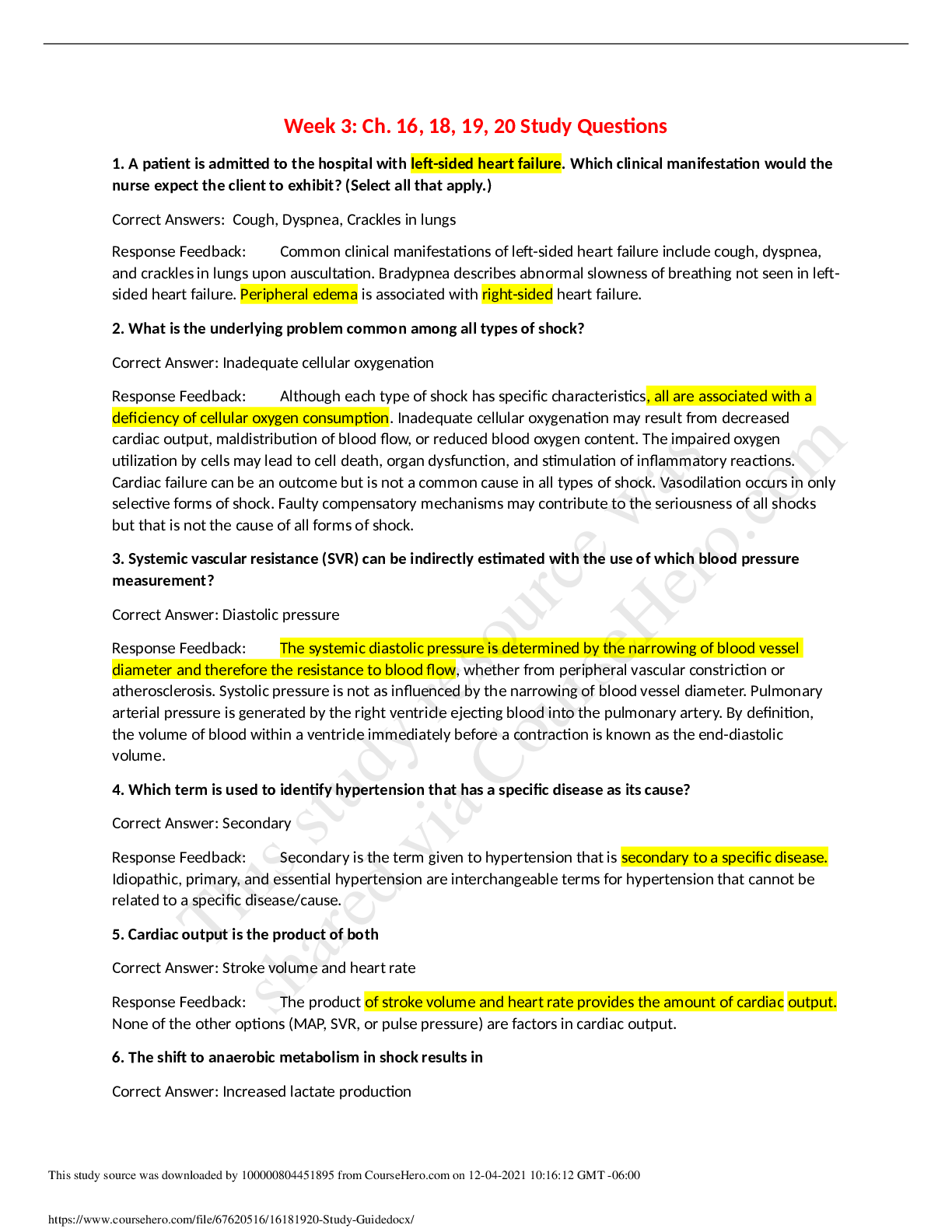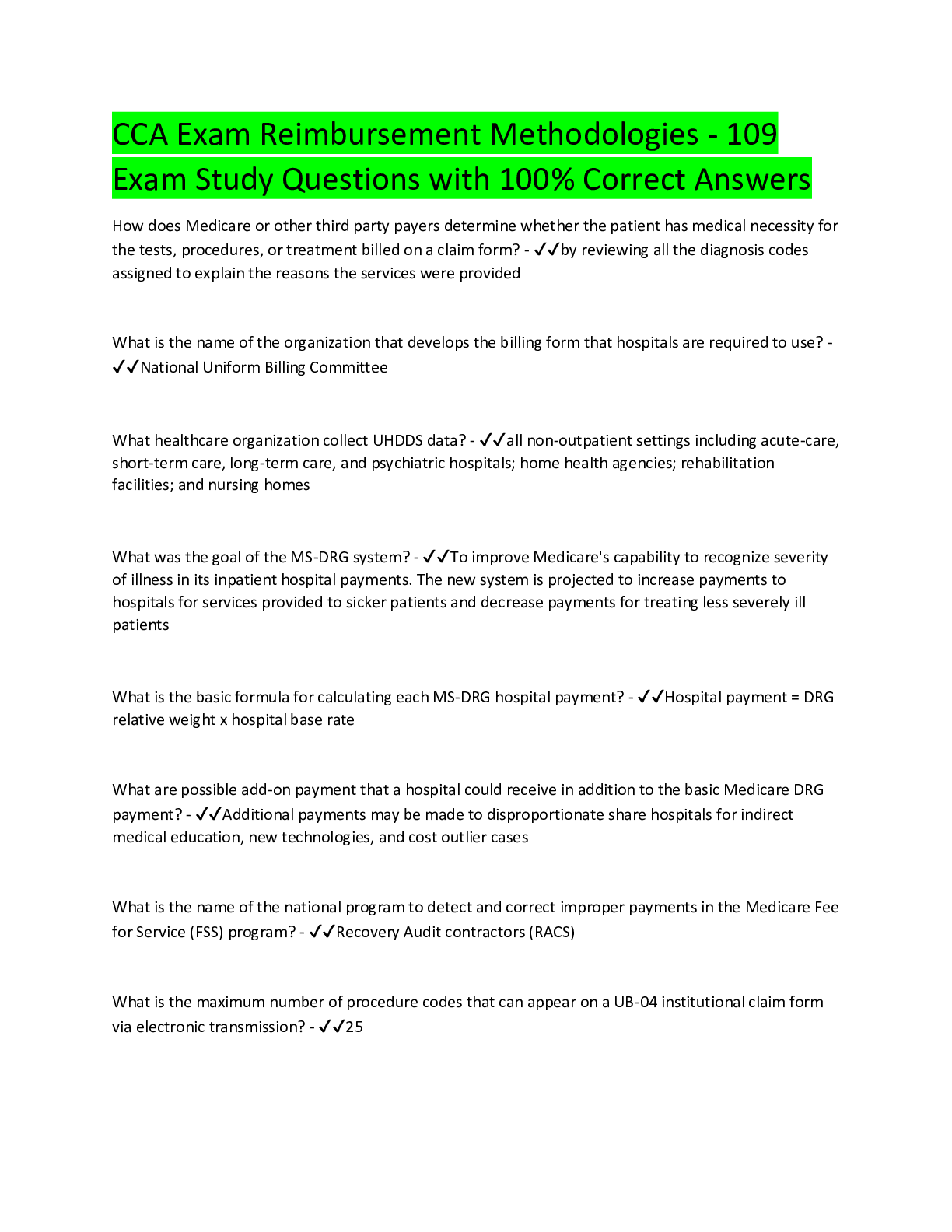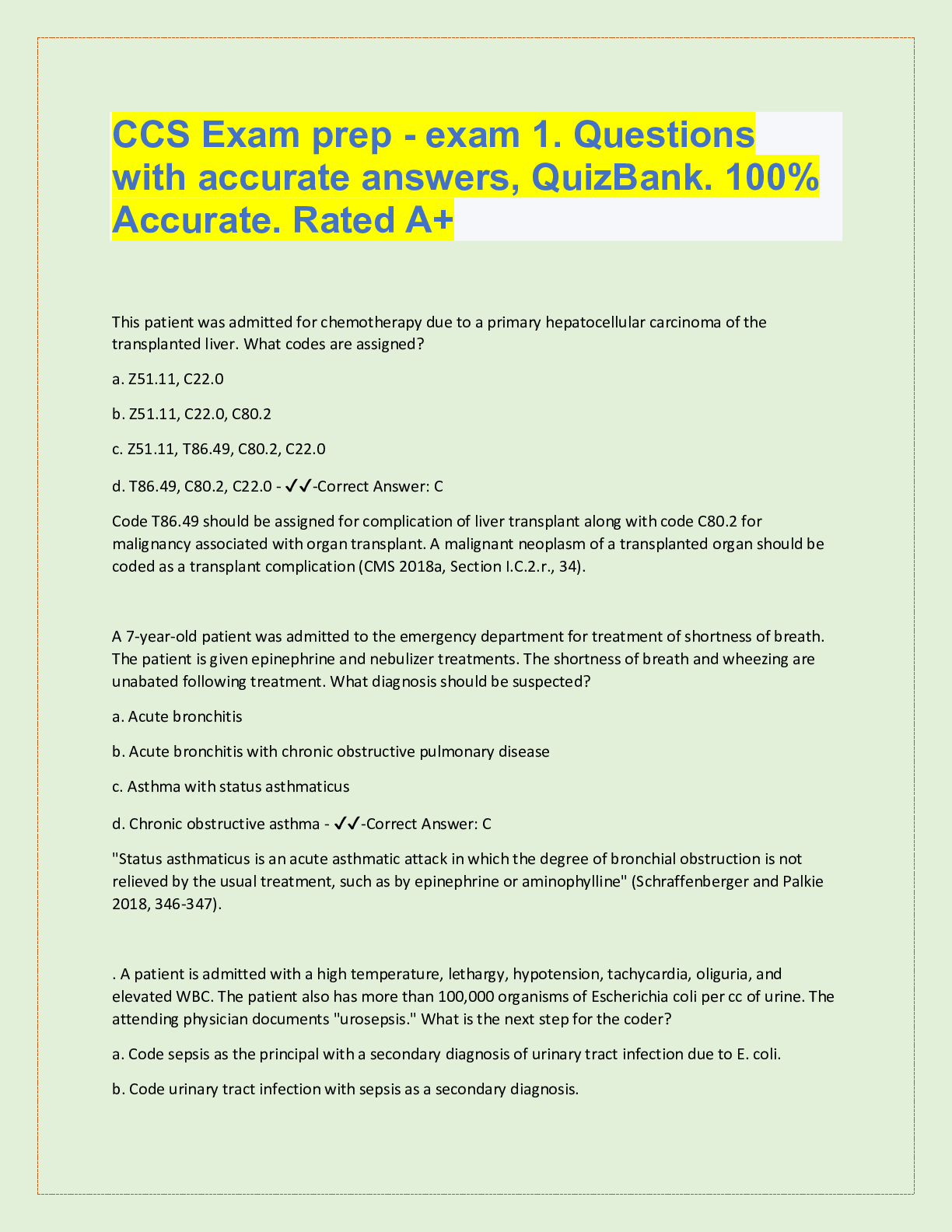nursing fundamentals > EXAM > HESI FUNDAMENTALS 2025 PRACTICE EXAM STUDY QUESTIONS WITH CORRECT ANSWERS GUARANTEED PASS | RATED A+ (All)
HESI FUNDAMENTALS 2025 PRACTICE EXAM STUDY QUESTIONS WITH CORRECT ANSWERS GUARANTEED PASS | RATED A+
Document Content and Description Below
HESI FUNDAMENTALS 2025 PRACTICE EXAM STUDY QUESTIONS WITH CORRECT ANSWERS GUARANTEED PASS | RATED A+ 1. Which factor is used to assess the quality of health care provided to a client? A.) Fall prev... ention measures employed for the client B.) Functional health status of the client after discharge C.) Hand hygiene practiced by the health care personnel D.) Teamwork and coordination among health care personnel - Answer>>> B Rationale: Health care providers determine the quality of care provided to the client by measuring outcomes that show how a client's health status has changed. One method of measuring the quality of health care provided to the client is the functional health status of the client after discharge. The nursing staff should take necessary fall prevention measures for the client; however, this is not a measurable outcome. All health care personnel should practice hand hygiene to prevent infection, which is a quality measure, not an outcome of health care. Teamwork and coordination among health care personnel is important to provide efficient health care to the client. It is not an outcome of health care. 2. A client with bone cancer is receiving hospice care at home. The hospice program also provides respite care. What is the purpose of respite care? A.) Assisting the client with meals and personal care B.) Providing short-term relief to the family caregiver C.) Providing skilled nursing interventions for the client D.) Providing counseling and treatment for behavioral problems - Answer>>> B Rationale: Hospice programs are focused at providing pain relief to the client. Some hospice programs also provide short-term relief or "time-off" to the family caregiver. This enables the caregiver to leave the home to attend to other activities while the client is looked after by a responsible person. Services in an assisted living facility provide meals and personal care to the clients. A skilled nursing facility or an intermediate care facility provides skilled interventions such as intravenous administration of fluids, wound care, or long-term ventilator management. Psychiatric facilities provide counseling and treatment to clients for behavioral problems. 3. What is a stressor? A.) A stressor is any stimuli that can produce tension and cause instability within the system. B.) A stressor exists within the client system, such as the physiological and behavioral responses to illnesses. C.) A stressor exists outside the client system; external stressors include changes in healthcare policies or increased the crime rates. D.) A stressor is a term, description, or label given to describe an idea or responses about an event, a situation, a process, a group of events, or a group of situations. - Answer>>> A Rationale: A stressor is any stimuli that can produce tension and cause instability within the system. Internal factors exist within the client system, like the physiological and behavioral responses to illnesses. External factors exist outside the client system; these stressors include changes in healthcare policies or increased crime rates. A phenomenon is a term, description, or label given to describe an idea or responses about an event, a situation, a process, a group of events, or a group of situations. 4. An African man presents to the emergency department to obtain pain medication. The nurse behaves judgmentally and labels the client a drug abuser. What is the nurse demonstrating? A.) Ethnocentrism B.) Multiculturalism C.) Cultural encounter D.) Cultural imposition - Answer>>> A Rationale: Ethnocentrism is the tendency of a person to hold his or her own beliefs superior to those of other people. It causes biases and prejudices in regard to people from other groups. This practice is transmitted by cultural groups from one generation to another. In multiculturalism, two cultures coexist and are accepted by the individual. In a cultural encounter, part of cultural competence, a nurse engages in cross-cultural interactions for effective communication. Cultural imposition occurs when a nurse or health care provider ignores the differences between his or her own culture and others and imposes his or her beliefs on people of other cultures. [Show More]
Last updated: 7 months ago
Preview 5 out of 36 pages

Loading document previews ...
Buy this document to get the full access instantly
Instant Download Access after purchase
Buy NowInstant download
We Accept:

Reviews( 0 )
$26.00
Can't find what you want? Try our AI powered Search
Document information
Connected school, study & course
About the document
Uploaded On
Dec 28, 2024
Number of pages
36
Written in
Additional information
This document has been written for:
Uploaded
Dec 28, 2024
Downloads
0
Views
12


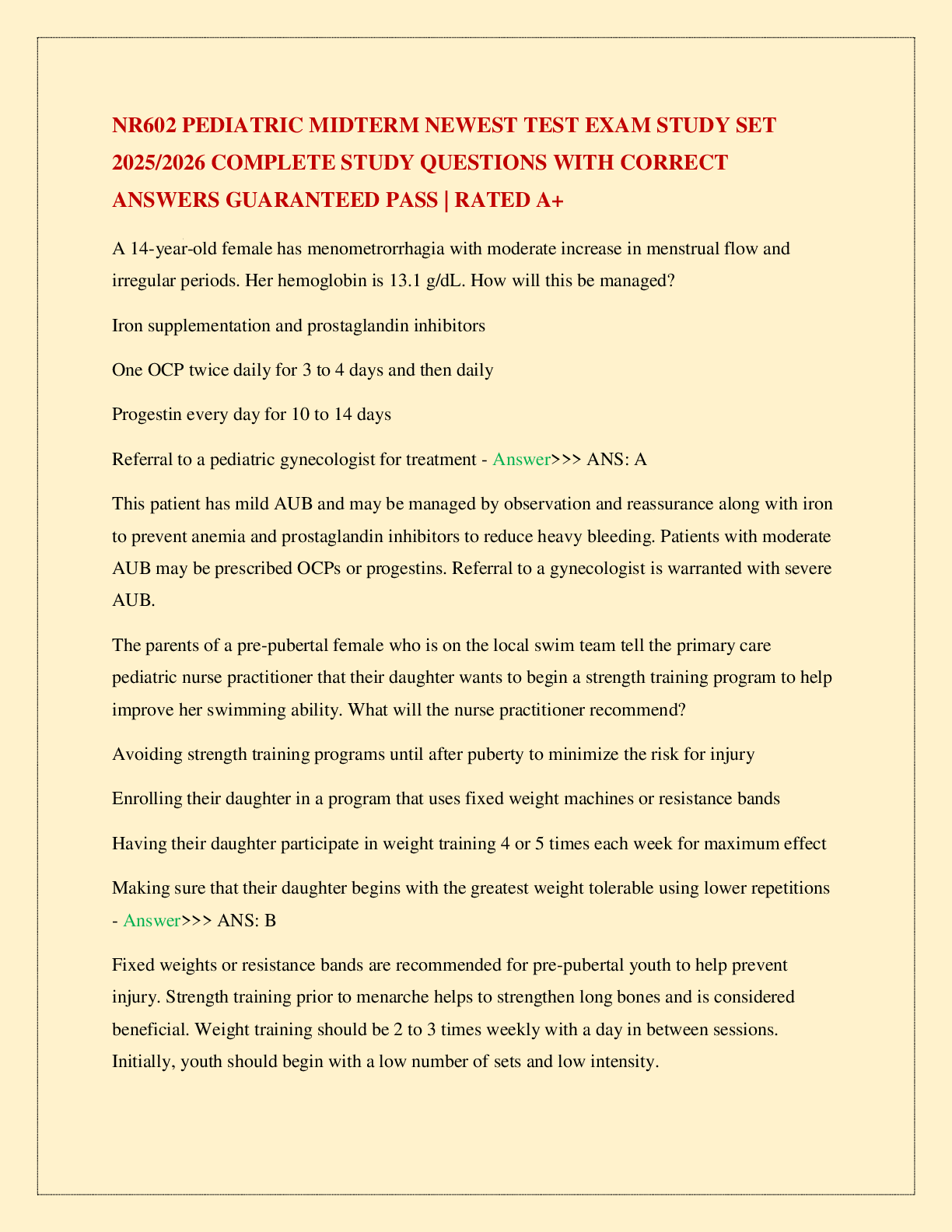
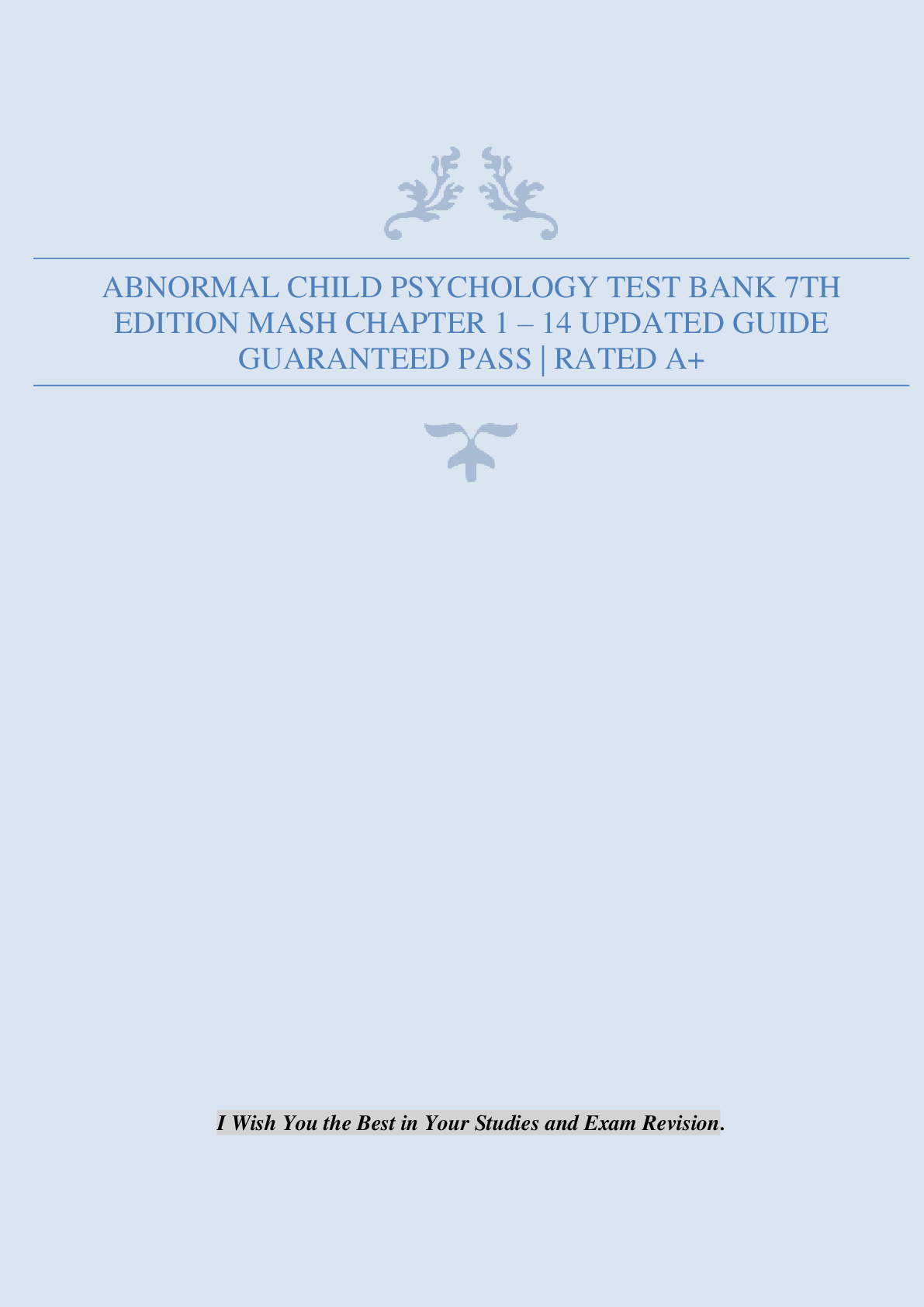
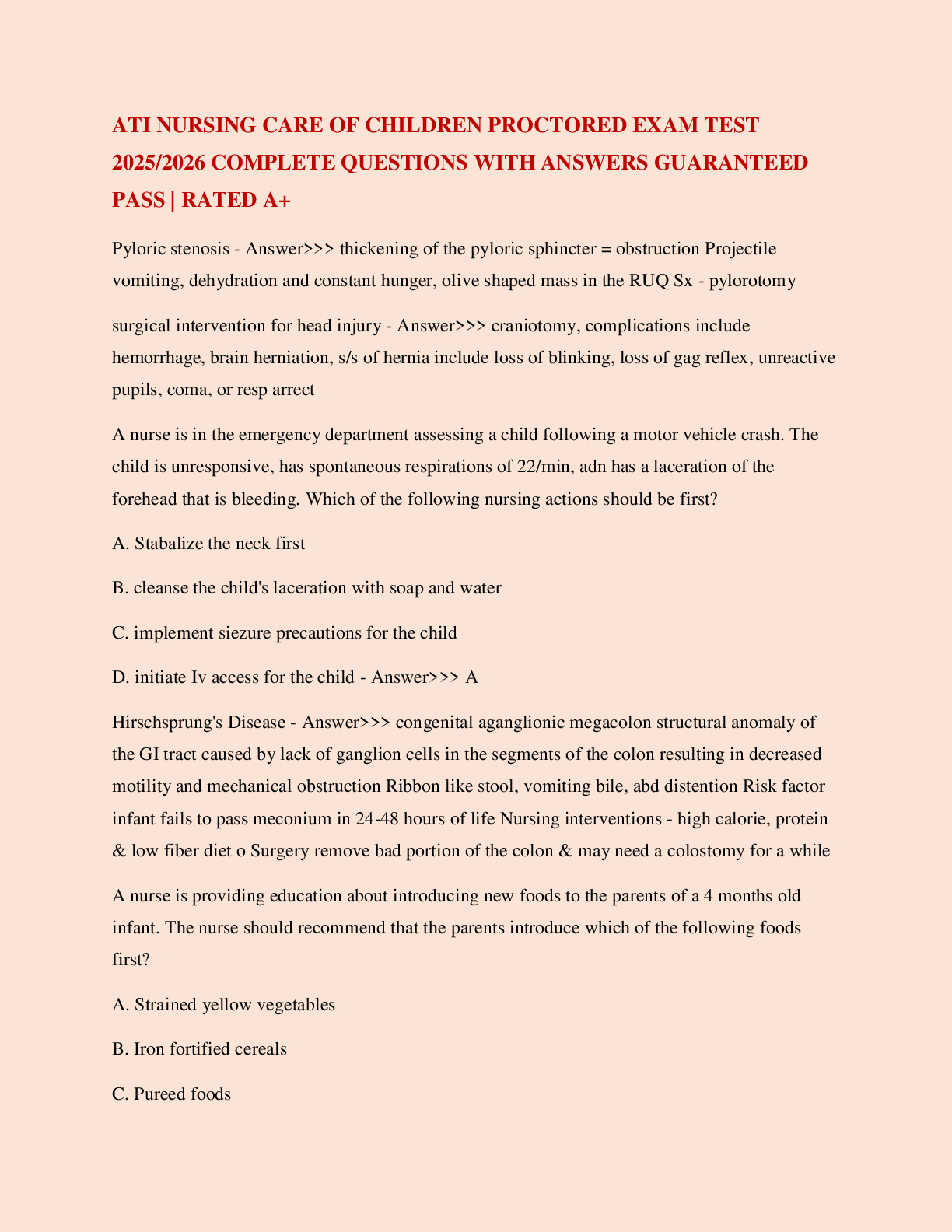

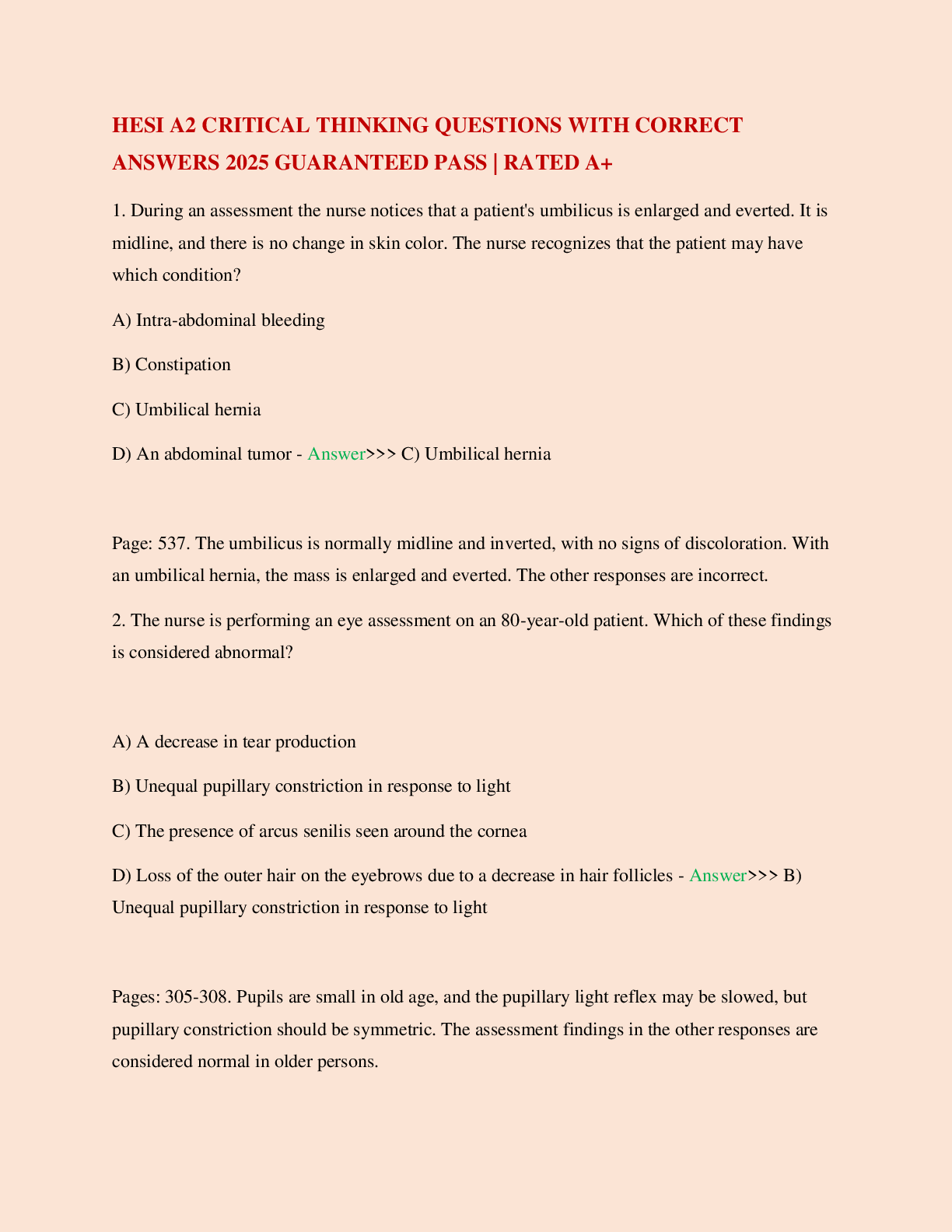
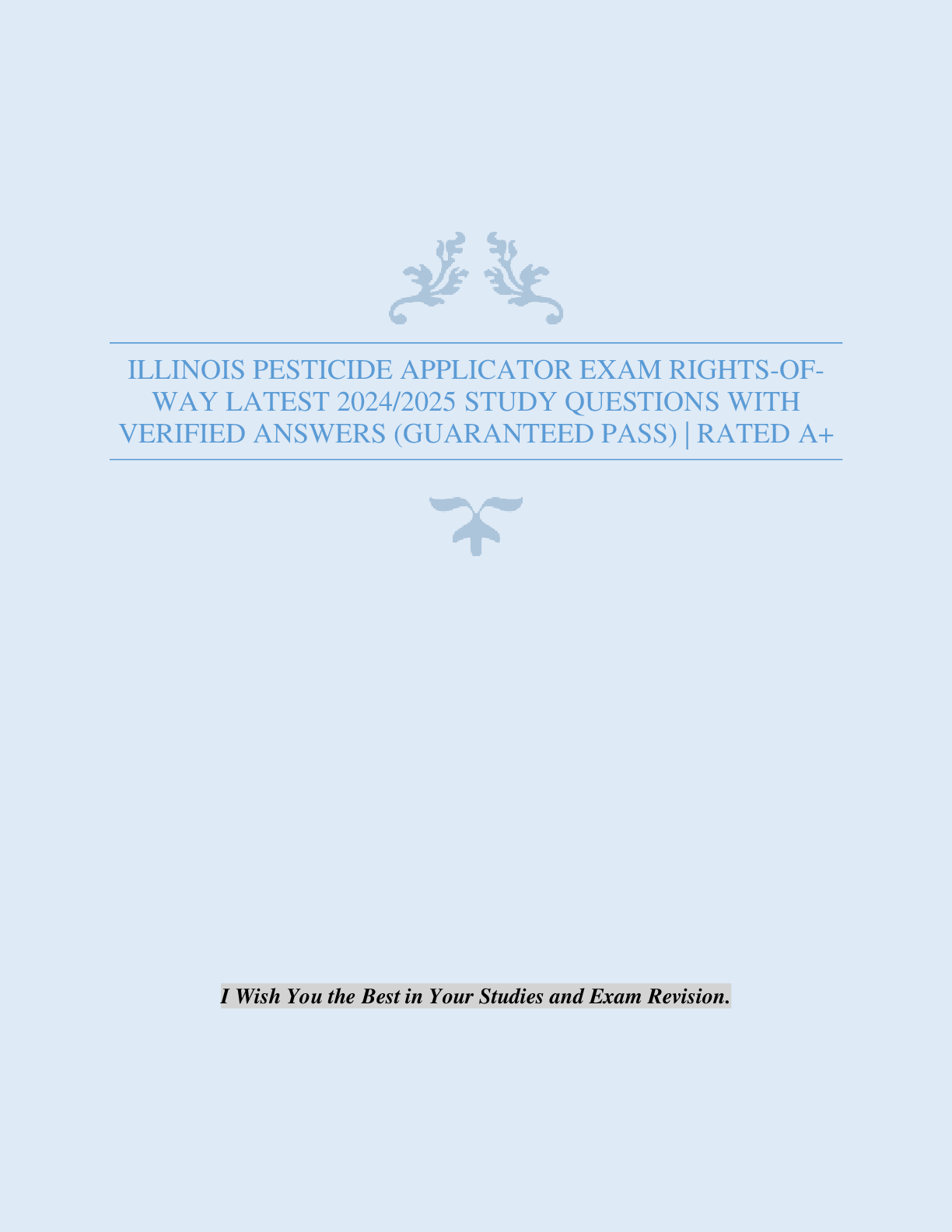

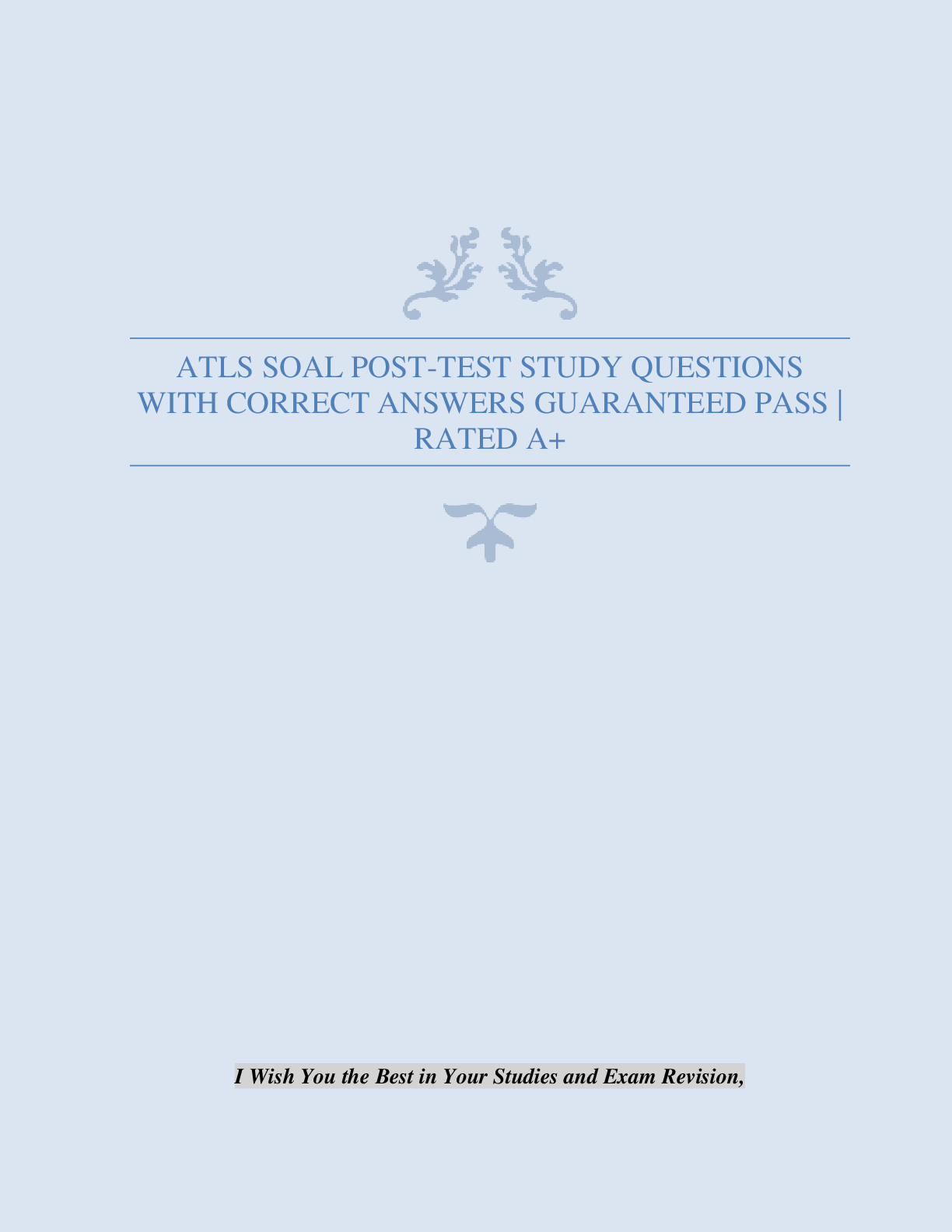
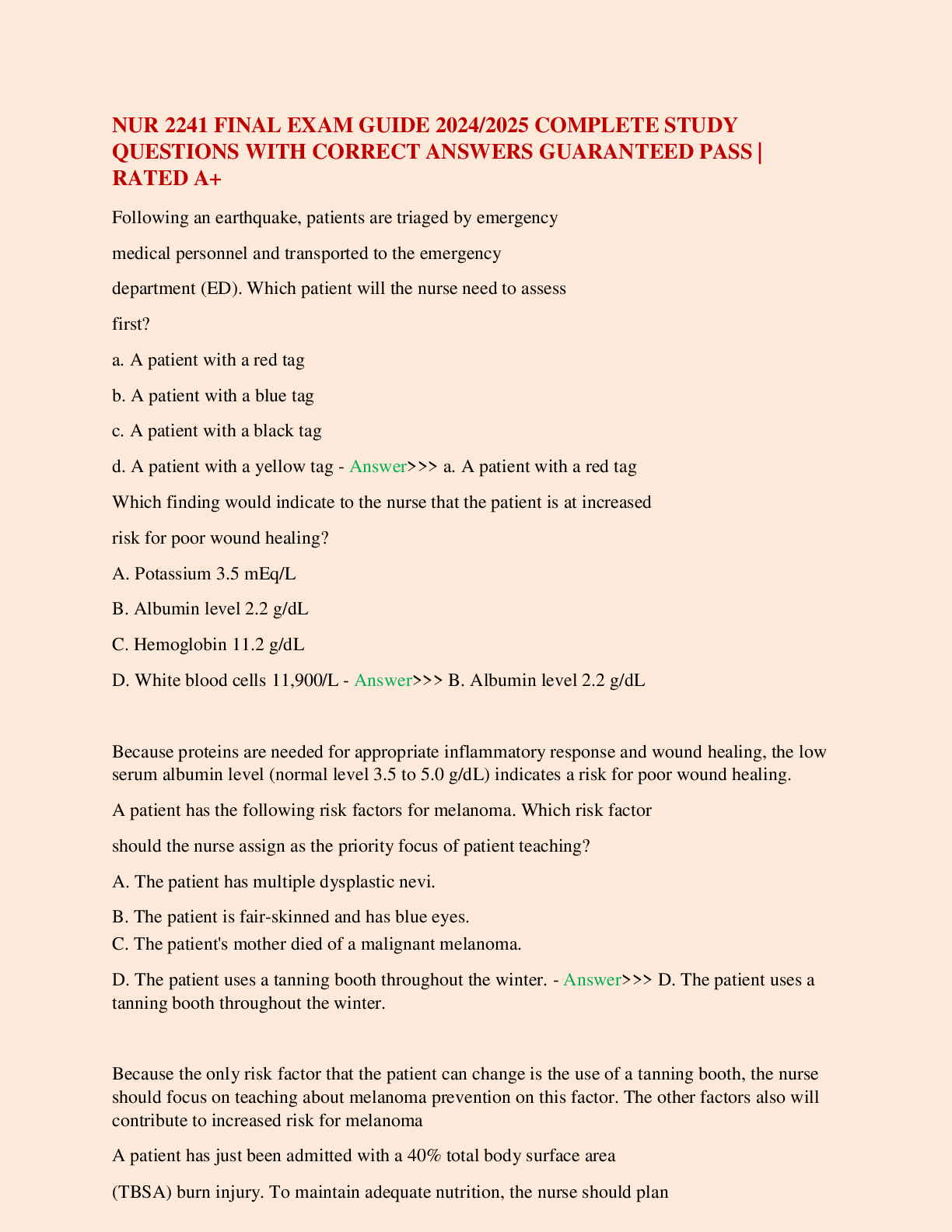
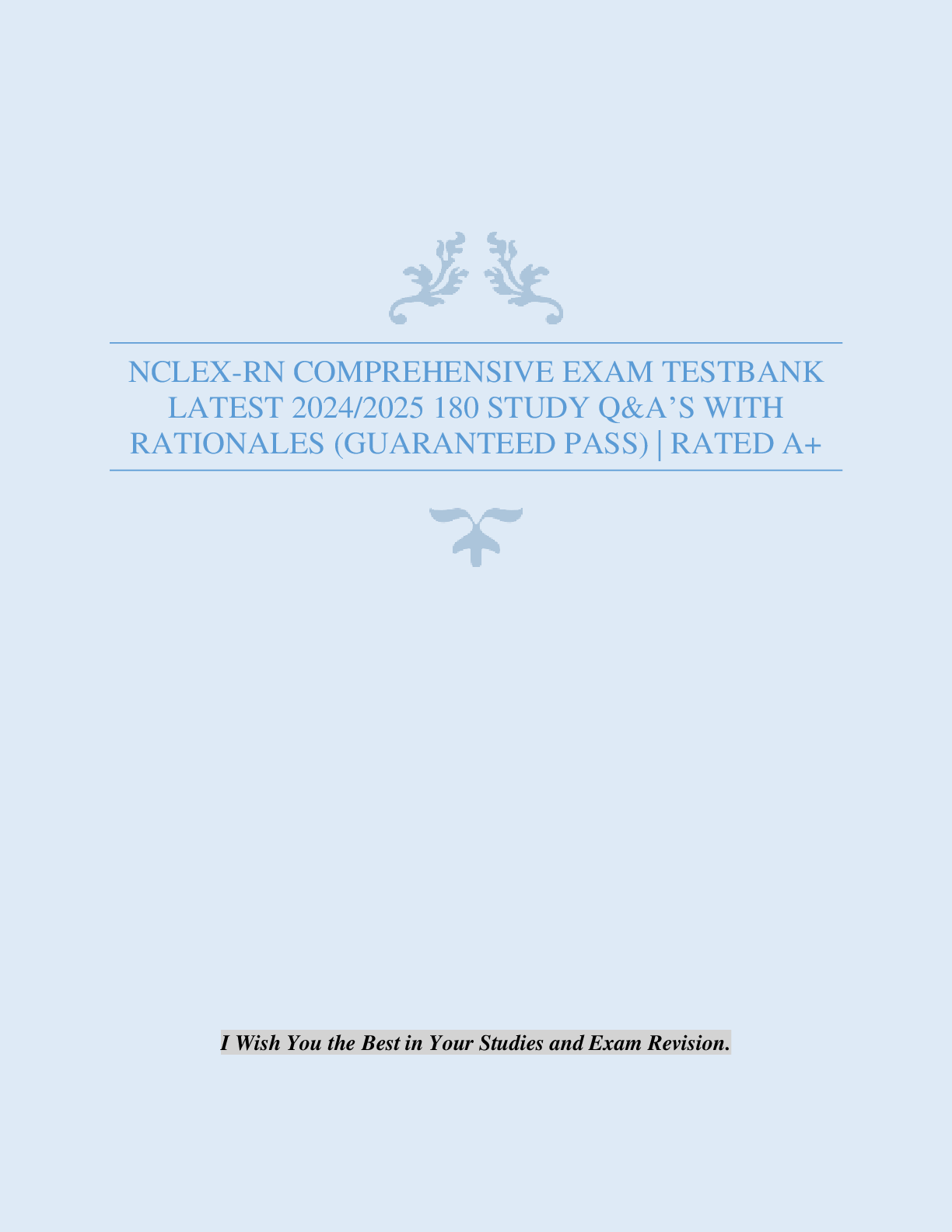
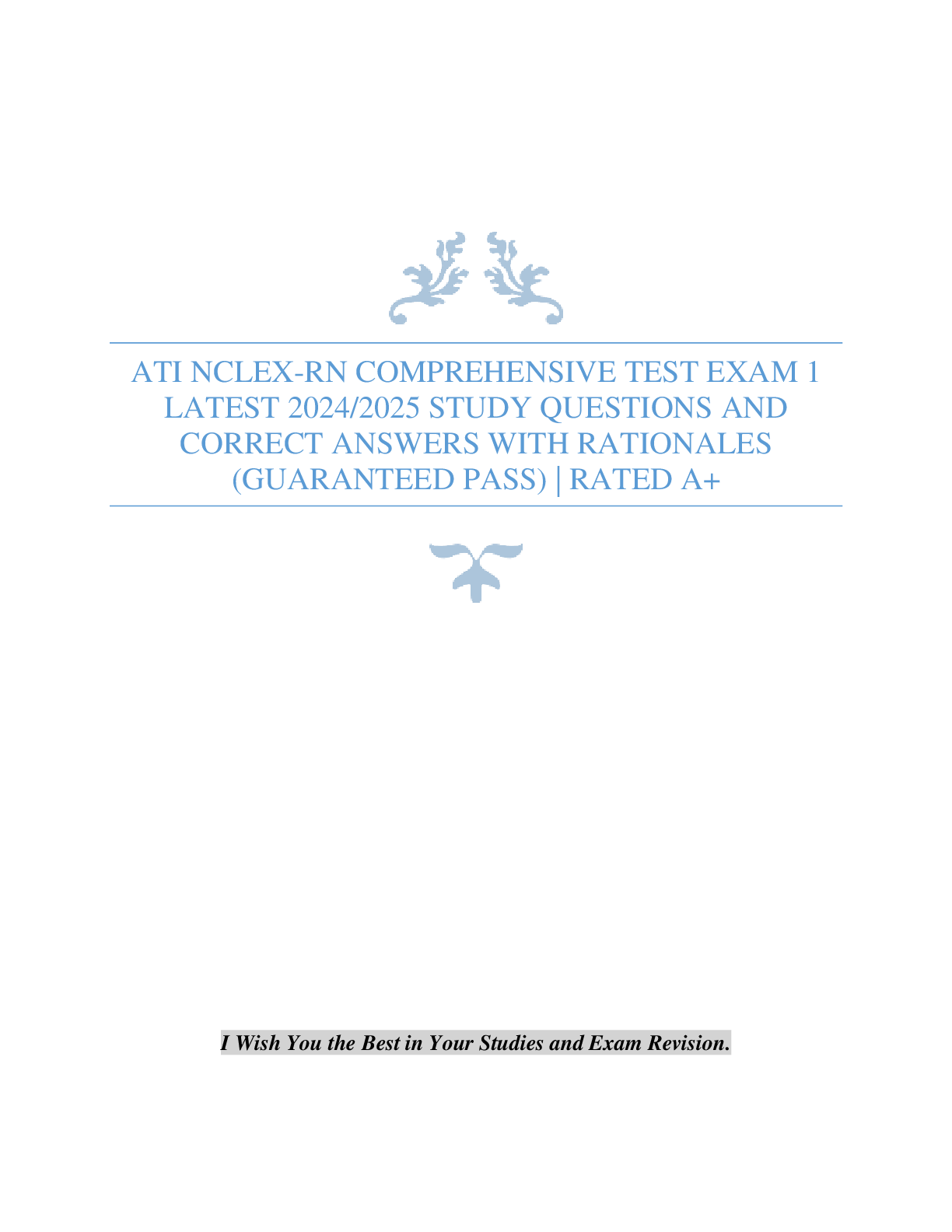

.png)

